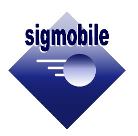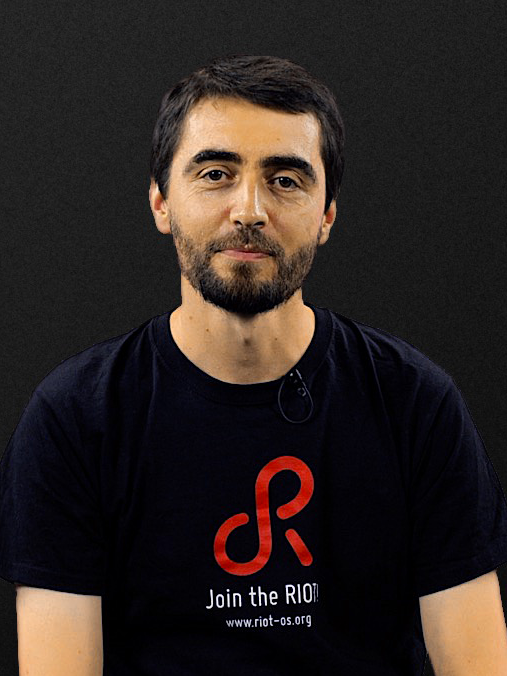


Workshops

Image via Stockvault (copyright-free)
Wednesday, February 17, 14:00 - 17:00 (CET)
The CHIIoT workshop brings together researchers and practitioners from industrial design, computer science, and electrical engineering working on new challenges in industry and academia. The workshop will provide a platform for participants to review and discuss challenges and opportunities in the intersection of computer-human interaction and the internet of things, focusing on human-centered applications using emerging connectivity and sensing technologies. We aim to jointly develop a design space and identify opportunities for future research.
More information about the workshop and the submission instructions are available at http://chiiot.org
Tutorials
Internet of Things with Microcontrollers: a hands-on course
Wednesday, February 17, 14:00 - 17:00 (CET)
The tutorial addresses the entire chain of IoT microcontroller programming, from object to cloud. It provides an introduction to the IoT and hands-on experience in programming connected objects with microcontrollers. The programming activities of this course are carried out with Jupyter notebooks (https://jupyter.org/), using the RIOT OS (https://www.riot-os.org/), and the FIT IoT-LAB testbed (https://www.iot-lab.info/).
Program:
The general outline of the tutorial is as follows:
- A common core with activities that are followed by all the participants (1 hour)
- Platform overview presentation: a presentation to give an overview of the testbed: design, usage and key-features.
- First Experiment: launch your first experiment on the testbed and see basic usage and basic tools.
- Discover RIOT-OS: write your first application and extend it. Discover the OS architecture and API with threads and timers and use sensors of the IoT-LAB M3 board.
- A set of pedagogical activities in which participants can choose at their convenience around the two themes of the Low-Power Communication Networks and IoT security (2 hours)
Low-Power Communication Networks:- Discover 802.15.4 radio communication.
- Use IPV6 with 6LoWPAN protocol.
- Send/Receive UDP sockets.
- Use IoT protocols: CoAP and LwM2M protocol.
- Discover the basics of LoRaWAN communication Security.
- Hash, encryption scheme and signature.
- Communication with DTLS.
- Over the air firmware update.
Note: activities take a minimum of 15/20 minutes (e.g. Discover 802.15.4 radio communication) and a maximum of 45 minutes (e.g. Discover the basics of LoRaWAN communication)
Bio of speakers:


Requirements:
Participating in this tutorial doesn’t require any specific hardware or software installation. We use an IoT-LAB JupytherHub instance 4 with which participants can do all the activities. The tutorial can have a maximum of 30 participants.
Intra-body embedded networks exploiting ultrasounds and coupling technologies
Wednesday, February 17, 10:00 - 13:00 (CET)
Intra-body communication (IBC) is a novel key research area that will transform the next generation of healthcare technologies by in situ testing of physiological conditions, personalized medicine and proactive and targeted drug delivery. Intra-body networking (IBN) is the paradigm that interconnects the implants and allows them to transmit measurements to an external centre for real time processing and monitoring and to send commands to embedded actuators. Energy efficient and safe communication among implants, body sensors and external devices is thus required. The tutorial presents novel and biocompatible communication technologies for intra-body area networks that use the human body as a medium for data communication. In particular, ultrasounds and coupling techniques will be discussed with the specific aim of overcoming the limitations and weaknesses of the currently employed radio frequency technologies such as IEEE 802.15.4 and IEEE 802.15.6. After describing the unique features of the human tissues and the basics on ultrasounds and coupling physics, the design aspects for IBNs will be discussed; then, protocols and architectures to support intra-body communication and networking in order to send biomedical data over tissues will be illustrated. To this purpose relevant literature in the field will be discussed with particular attention to medical applications and practical aspects. Experimental testbeds and activities in this field will be discussed by shading light on their high technology readiness level.
Program:
The tutorial will be presented in about three hours. The interchange of three speakers facilitates to catch the attention of the audience. Each speaker will discuss for about one hour in such a way to foster the participants’ interest by also balancing theoretical and practical contents, and discussing physical communication paradigms for both ultrasounds and coupling techniques, protocol design, experimental testbeds, applications and future research trends.
The outline of the tutorial includes:
- Intra Body Area Networks (IBANs): application requirements and design aspects. (15 min).
- State of the Art on RF solutions: Architecture and Standards. (15 min).
- Alternative techniques for IBAN: Ultrasounds & Coupling methods (inductive coupling, capacitive coupling, galvanic coupling). Communication techniques high level comparison. (30 min).
- Basics on ultrasounds and galvanic coupling physics and channel model. (45 min).
- Design of intra-body networks: medium access control, networking issues and experimental testbeds. (1 h).
- Relevant applications and open issues. (15 min).
Bio of speakers:



Requirements:
There are no specific requirements. No special hardware or software is needed for this tutorial.

